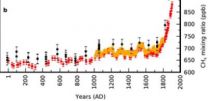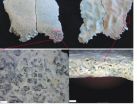(Press-News.org) Philadelphia, PA – October 4, 2012—Diabetes mellitus is a chronic disease in which individuals exhibit high levels of sugar in the blood, either due to insufficient production of insulin—the hormone that allows glucose to be absorbed by body cells—or the body's lack of response to insulin. Type 1 diabetes occurs due to loss or dysfunction of β-cells of the pancreas, the organ that produces insulin. Type 2 diabetes is caused by a defective glucose-insulin regulatory system. The most common control for diabetes is by subcutaneous injection of insulin analogues through insulin pumps.
In a paper published today in the SIAM Journal on Applied Mathematics, authors Mingzhan Huang, Jiaxu Li, Xinyu Song, and Hongjian Guo propose novel mathematical models for injection of insulin in type 1 and type 2 diabetes. The models simulate injections of insulin in the manner of insulin pumps, which deliver periodic impulses in diabetes patients.
Management of diabetes by insulin pumps usually follows an open-loop approach in which blood glucose can be periodically monitored by an individual using a glucose meter, and then adjusted by either eating a carbohydrate in cases of low blood glucose or administering a dose of insulin in cases of high blood sugar. While this is important to ensure that diabetes patients have sufficient insulin, it carries the risk of hypoglycemia, which is caused by excess insulin leading to excessive glucose absorption, resulting in low blood sugar. In addition, this approach requires diabetics to follow stringent regimens with regard to diet and insulin injections.
Research is now focused on a closed-loop approach, where a medical device will provide automatic glucose-responsive insulin administration. Closed-loop systems achieve this by real-time feedback between glucose levels and insulin delivery, approximating the endocrine functionality of a healthy pancreas, hence, also called the artificial pancreas. Early clinical trials of the artificial pancreas have shown positive results.
This type of system will greatly improve the lifestyles of diabetes patients, obviating the need for manual injections, and making diet control slightly less stringent. The key factor here is the control algorithm, which manages insulin delivery based on glucose levels while accounting for measurement errors and kinetic delays. However, development of an artificial pancreas is impeded due to lack of reliable predictive models and methods for accurate glucose monitoring, in addition to inefficient control algorithms.
In this paper, differential equation models are used to simulate injections of insulin in both open and closed-loop systems. Algorithms are carefully designed to determine the time and dose of injections based on physiology and metabolism of insulin secretion, designed to prevent episodes of hyper and hypoglycemia. The models are then qualitatively and numerically assessed by injections of insulin analogues in the environment of both type 1 and type 2 diabetes.
The open loop model incorporates uniform injection of insulin at periodic intervals, where the frequency and dose of injection are chosen based on set parameters. "In open-loop control, the model analysis reveals that a smaller dose with higher delivery frequency is more effective, which confirms that continuous subcutaneous insulin injection (CSII), which is currently used clinically, is efficient," explains senior author Hongjian Guo.
The closed-loop model proposes injection of insulin when blood glucose level passes a certain threshold value using automatic feedback from a glucose monitoring system. "The model analysis for closed-loop control asserts that a larger dose is preferred with a careful consideration toward avoiding hypoglycemic episodes," Guo says. This is helpful in cases where patients may retain some ability to secrete small amounts of insulin; excessive insulin delivery would be prevented here as signaled by low glucose levels.
The paper thus demonstrates that insulin delivery can be modeled based on both periodic (open loop) and state-dependent (closed loop) impulses.
"Efficient and effective algorithms could be developed based on this model and embedded in the closed-loop control of artificial pancreas, which determine the dose and the timing for insulin delivery," says Guo. "Validation is extremely important in the design of an artificial pancreas. [Software] for validating the designs could be developed based on these models with an appropriate simulation of glucose input functions."
Future work involves achieving greater sensitivity by factoring specific aspects of body physiology into the artificial pancreas software, and using patient statistics to fine-tune parameters used in its algorithm. "We continue to improve the models by incorporating physiological time delays and mechanical delays in the system, and estimating model parameters with competent statistical methods."
###
About the authors:
Mingzhan Huang and Xinyu Song are researchers at the College of Mathematics and Information Science, Xinyang Normal University in Henan, China. Jiaxu Li is a researcher at the Department of Mathematics, University of Louisville. Hongjian Guo is a professor at the College of Mathematics and Information Science, Xinyang Normal University in Henan, China.
This work is partly supported by NIH Grant R01-DE019243, P30ES01443, and DOE Grant DE-EM0000197.
Source article:
Modeling Impulsive Injections of Insulin: Towards Artificial Pancreas
Mingzhan Huang, Jiaxu Li, Xinyu Song, and Hongjian Guo, SIAM Journal on Applied Mathematics, 72(5), 1524 (Online publish date: October 4, 2012)
About SIAM
The Society for Industrial and Applied Mathematics (SIAM), headquartered in Philadelphia, Pennsylvania, is an international society of over 14,000 individual members, including applied and computational mathematicians and computer scientists, as well as other scientists and engineers. Members from 85 countries are researchers, educators, students, and practitioners in industry, government, laboratories, and academia. The Society, which also includes nearly 500 academic and corporate institutional members, serves and advances the disciplines of applied mathematics and computational science by publishing a variety of books and prestigious peer-reviewed research journals, by conducting conferences, and by hosting activity groups in various areas of mathematics. SIAM provides many opportunities for students including regional sections and student chapters. Further information is available at www.siam.org.
[Reporters are free to use this text as long as they acknowledge SIAM]
Toward an artificial pancreas: Math modeling and diabetes control
Paper published today in the SIAM Journal on Applied Mathematics proposes mathematical models for impulsive insulin injections
2012-10-04
ELSE PRESS RELEASES FROM THIS DATE:
Advanced surgical approaches may benefit elderly patients with colorectal, bladder cancers
2012-10-04
CHICAGO—Advanced surgical techniques such as robotic-assisted operations and minimally invasive surgical procedures may extend survival and improve recovery in octogenarians with bladder and colorectal cancers when compared with patients who undergo conventional open operations according to two new studies presented at the 2012 Annual Clinical Congress of the American College of Surgeons.
Boston University investigators found robotic-assisted bladder procedures may be a viable option in selected patients aged 80 years and older who would not otherwise have an
operation ...
Penn-developed mouse model of debilitating lung disease suggests potential treatment regimen
2012-10-04
PHILADELPHIA – LAM, short for pulmonary lymphangioleiomyomatosis, affects about 1 in 10,000 women of childbearing age and is characterized by proliferation of smooth muscle-like cells in the lung, destruction of lung tissue, and growth of lymphatic vessels. The disease manifests itself in a wide variety of ways, so it is sometimes difficult to diagnose and there is no cure. The disease is caused by inactivation of either of two genes, TSC1 or TSC2, but to date no animal model has been able to replicate the pathologic features those mutations produce in humans.
Now, ...
Mom's high blood pressure in pregnancy could affect child's IQ in old age
2012-10-04
New research from the University of Helsinki, Finland, suggests that a mother's high blood pressure during pregnancy may have an effect on her child's thinking skills all the way into old age. The study is published in the October 3, 2012, online issue of Neurology®, the medical journal of the American Academy of Neurology.
"High blood pressure and related conditions such as preeclampsia complicate about 10 percent of all pregnancies and can affect a baby's environment in the womb," said study author Katri Räikkönen, PhD. "Our study suggests that even declines in thinking ...
Methane emissions can be traced back to Roman times
2012-10-04
Emissions of the greenhouse gas methane into the atmosphere can be traced back thousands of years in the Greenland ice sheet. Using special analytical methods, researchers from the Niels Bohr Institute, among others, have determined how much methane originates from natural sources and how much is due to human activity. The results go all the way back to Roman times and up to the present, where more than half of the emissions are now man-made. The results are published in the scientific journal, Nature.
Methane is an important greenhouse gas, which today is partly emitted ...
Surprising black-hole discovery changes picture of globular star clusters
2012-10-04
An unexpected discovery by astronomers using the National Science Foundation's Karl G. Jansky Very Large Array (VLA) is forcing scientists to rethink their understanding of the environment in globular star clusters, tight-knit collections containing hundreds of thousands of stars.
The astronomers used the VLA to study a globular cluster called Messier 22 (M22), a group of stars more than 10,000 light-years from Earth. They hoped to find evidence for a rare type of black hole in the cluster's center. They wanted to find what scientists call an intermediate-mass black hole, ...
50-hour whole genome sequencing provides rapid diagnosis for children with genetic disorders
2012-10-04
KANSAS CITY, Mo. – OCTOBER 3, 2012 – Today investigators at Children's Mercy Hospitals and Clinics in Kansas City reported the first use of whole genome information for diagnosing critically ill infants. As reported in Science Translational Medicine, the team describes STAT-Seq, a whole genome sequencing approach - from blood sample to returning results to a physician - in about 50 hours. Currently, testing even a single gene takes six weeks or more.
Speed of diagnosis is most critical in acute care situations, as in a neonatal intensive care unit (NICU), where medical ...
Key environmental factors influencing manta ray behavior identified
2012-10-04
Manta rays are more likely to gather together under either a new or a full moon, according to new research published Oct 3 in the open access journal PLOS ONE by Fabrice Jaine and colleagues at the University of Queensland.
The research identifies environmental factors that predict the abundance and behavior of manta rays at Lady Elliott Island in the Great Barrier Reef. The authors comment that knowing these factors is important for conservation efforts, "especially in the context of a changing climate and with targeted fisheries increasingly threatening manta ray populations ...
Oldest evidence of regular meat consumption by early humans found
2012-10-04
A fragment of a child's skull discovered at Olduvai Gorge, Tanzania shows the oldest known evidence of anemia caused by a nutritional deficiency, reports a new paper published Oct. 3 in the open access journal PLOS ONE.
The discovery, made by a global team of researchers led by Manuel Domínguez-Rodrigo from Complutense University, Madrid, suggests that early human ancestors began eating meat much earlier in history than previously believed. The skull fragment identified is thought to belong to a child somewhat younger than two and shows bone lesions that commonly result ...
Novel blood-based protein signature determined for rare, aggressive lung cancer
2012-10-04
Researchers have discovered a panel of 13 blood proteins that may be effective biomarkers to detect malignant mesothelioma, according to a study published Oct. 3 in the open access journal PLOS ONE by Rachel Ostroff from the company SomaLogic, which developed the new test, and colleagues at other institutions.
Malignant mesothelioma is a rare, aggressive form of lung cancer that can develop after prolonged exposure to asbestos. Because early diagnosis is difficult, most patients face a poor prognosis and have few options for treatment. In the study, authors compared proteins ...
Less is more when choosing between groups of assorted items
2012-10-04
When making decisions about the value of an assortment of different objects, people approximate an average overall value, which though frequently useful can lead to apparently irrational decision-making. A new study published Oct 3 in PLOS ONE by Jerald Kralik and colleagues at Dartmouth College shows for the first time that non-human primates also make similar 'irrational' choices based on approximation.
In the study, researchers found that rhesus monkeys preferred a highly-valued food item (a fruit) alone to the identical item paired with a food of positive but lower ...
LAST 30 PRESS RELEASES:
Oldest modern shark mega-predator swam off Australia during the age of dinosaurs
Scientists unveil mechanism behind greener ammonia production
Sharper, straighter, stiffer, stronger: Male green hermit hummingbirds have bills evolved for fighting
Nationwide awards honor local students and school leaders championing heart, brain health
Epigenetic changes regulate gene expression, but what regulates epigenetics?
Nasal drops fight brain tumors noninvasively
Okayama University of Science Ranked in the “THE World University Rankings 2026” for the Second Consecutive Year
New study looks at (rainforest) tea leaves to predict fate of tropical forests
When trade routes shift, so do clouds: Florida State University researchers uncover ripple effects of new global shipping regulations
Kennesaw State assistant professor receives grant to improve shelf life of peptide- and protein-based drugs
Current heart attack screening tools are not optimal and fail to identify half the people who are at risk
LJI scientists discover how T cells transform to defend our organs
Brain circuit controlling compulsive behavior mapped
Atoms passing through walls: Quantum tunneling of hydrogen within palladium crystal
Observing quantum footballs blown up by laser kicks
Immune cells ‘caught in the act’ could spur earlier detection and prevention of Type 1 Diabetes
New membrane sets record for separating hydrogen from CO2
Recharging the powerhouse of the cell
University of Minnesota research finds reducing inflammation may protect against early AMD-like vision loss
A mulching film that protects plants without pesticides or plastics
New study highlights key findings on lung cancer surveillance rates
Uniform reference system for lightweight construction methods
Improve diet and increase physical activity at the same time to limit weight gain, study suggests
A surprising insight may put a charge into faster muscle injury repair
Scientists uncover how COVID-19 variants outsmart the immune system
Some children’s tantrums can be seen in the brain, new study finds
Development of 1-Wh-class stacked lithium-air cells
UVA, military researchers seek better ways to identify, treat blast-related brain injuries
AMS Science Preview: Railways and cyclones; pinned clouds; weather warnings in wartime
Scientists identify a molecular switch to a painful side effect of chemotherapy
[Press-News.org] Toward an artificial pancreas: Math modeling and diabetes controlPaper published today in the SIAM Journal on Applied Mathematics proposes mathematical models for impulsive insulin injections



